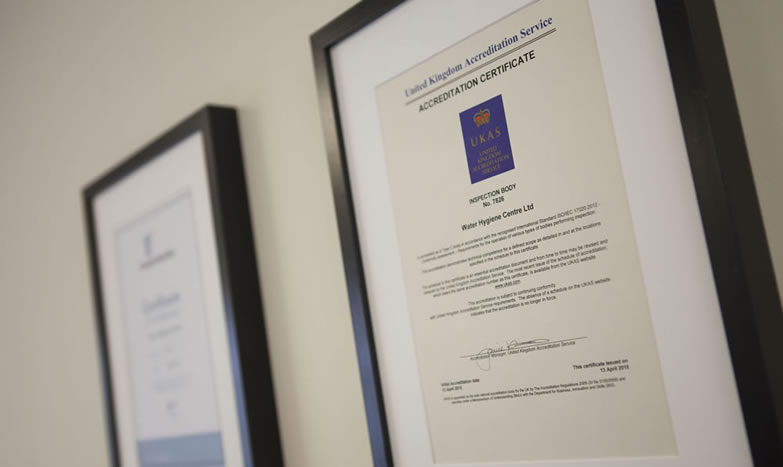
Risk assessments are the ‘cornerstone’ of health and safety. As a reminder to us all, the HSE state ‘It is a legal requirement for every employer and self-employed person to make an assessment of the health and safety risks arising out of their work. The purpose of the assessment is to identify what needs to be done to control health and safety risks. Regulation 3 of the Management of Health and Safety at Work Regulations 1999.’
When it comes to water hygiene and risk assessments, in our opinion, there are different types of risk assessment! To help demonstrate what we mean the table below outlines these different types of risk assessment. To go one step further with these different types of risk assessment we also believe that they are completed by those who are suitably competent and experienced for that type of assessment.

Who are these different people?
Surveyor: a risk assessor who conducts independent risk assessments in line with ACoP L8, ISO/IEC 17020:2012 and BS8580:2010. The scope of the output reports typically include a risk assessment report, a risk minimisation scheme and schematic drawings.
Authorising Engineer (Water): is an independent professional advisor whose primary role is to assist an organisation with the proactive management of water hygiene risks, acting as an auditor, assessor for appointments and monitors the performance.
When acting as the AE(W) we are keen to ensure that our clients have a robust and proactive risk management processes in place. As such, for risk assessments we assist our clients with ensuring they’ve reviewed their risk assessments and when change criteria have been met the client is able to make an informed decision on updating their risk assessments. This approach of review against change criteria means the entire risk assessment process becomes more fluid, instead of the old two year frequency where the entire property stock was re-assessed, the review means risk assessments are more dynamic and reflective of what has occurred.
To this end as an AE(W) we do not deliver or undertake the engineering type of risk assessment. We actually support the client in establishing a review process for the client to use. The ‘change criteria’ detailed in the review is based on criteria found in HSG274 part 2. The client completes this review process, the WSG (Water Safety Group) has transparency on where risk assessment should be updated.
Moving on to identify a risk assessor to complete your risk assessment, a quick check on the LCA [Legionella Control Association] website and you can find hundreds of companies all registered to deliver risk assessments. How does one start to differentiate against all of those listed? BS8580:2010 details risk assessors should demonstrate impartiality and integrity, this is your starting point. In the table below we’ve demonstrated impartiality and integrity from the perspective of commissioning an independent consultancy compared with a contractor.

Free lunch? It’s what we’ve come to terms with the contractors ‘give away sandwich’. They will provide monitoring work and remedial works and pressed in the middle is the risk assessment. How good do you think the risk assessment will actually be when there is a lack of impartiality and integrity? The table above really does highlight the major benefits to using an independent water hygiene consultancy for your risk assessment compared to commissioning a contractor.
Many, if not all of us, recognise the importance of using UKAS accredited labs for water sample analysis and UKAS accredited labs for thermometer calibration. We already subscribe to the concept of impartiality and integrity through this process. Thinking about UKAS and the need for independent risk assessments, a quick search of the UKAS website reveals only twelve companies have achieved UKAS accreditation for their risk assessment method. One of those twelve being the Water Hygiene Centre. Of the remaining companies listed not all are truly independent, some do offer remedial work, monitoring and provision of alternative control strategies. Although this is now far more transparent given the exclusive few listed as UKAS accredited.
In conclusion, independent consultancies and contractors frequently undertake similar services for you, they inevitably will not take the same approach [as detailed in the table above]. Not all risk assessments are the same, so ensure the right risk assessors have been commissioned and their competency is assessed. This assessment of competency, impartiality and integrity can be aided by selecting a UKAS accredited risk assessment. The Water Hygiene Centre can provide support with firstly establishing risk assessment need through the completion of the risk assessment review. From this review the output will identify where risk assessment updates are required.
Feel free to reach out if you have any questions about this blog or if you would like to consult with one of our experts for further advice on water hygiene.
Editors Note: The information provided in this blog is correct at date of original publication - June 2018.
© Water Hygiene Centre 2019








